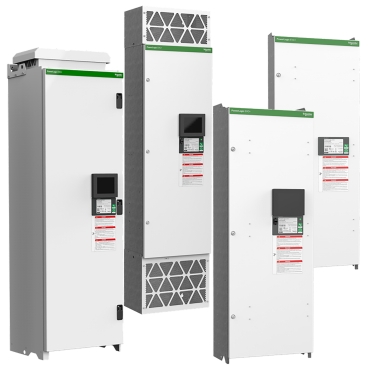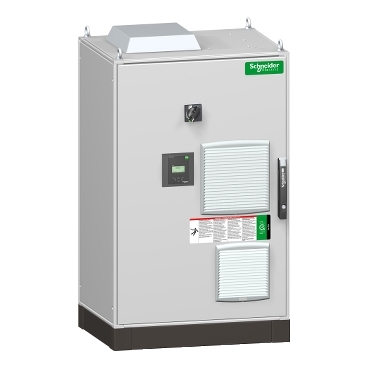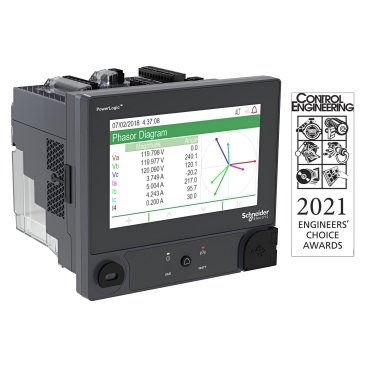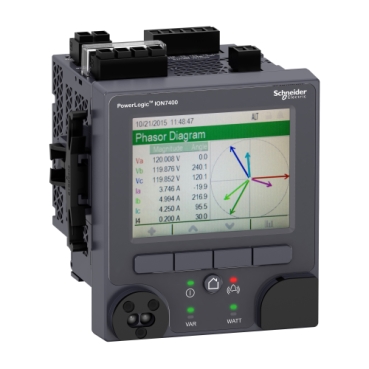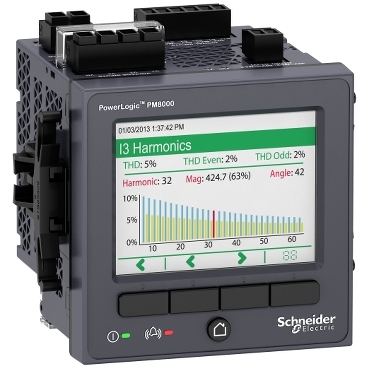Power quality management
Power quality management
Power quality issues are a primary cause of device malfunction, equipment failure, and power outages, resulting in costly unplanned downtime. Improved power quality optimises operations and equipment to ensure business continuity.

Why power quality matters

Power quality underpins the efficiency and effectiveness of electrical systems. Effective power quality optimises performance, contributes to sustainability, and safeguards investments in equipment and infrastructure.
Our solutions address the most common problems, ensuring that you always have clean, high-quality power for less unplanned downtime, better equipment performance, and lower electricity bills.
Did you know?
Poor power quality causes annual global losses of up to $300 billion (USD)*
More than 80% of power quality issues are from voltage sags**
A 0.1 second interruption can be just as costly as a one-hour interruption***
Explore the five pillars of optimal power quality
Efficiency and cost savings
Integrate capacitors, synchronous condensers, filters, and monitoring systems to optimise reactive power and improve efficiency. Power factor management reduces capital expenses by optimising system capacity, eliminates utility PF penalties, and lowers losses in transformers and conductors. It also maximises power usage and reduces CO₂ emissions.
Explore our products that help improve power factor
Reliability and efficiency with active filters
Employ active filters and voltage regulators to boost reliability and optimise power flow. Safeguard against harmonics, ensure power quality, and balance loads to enhance equipment efficiency and longevity. Reduce outages and energy waste and optimise operations by trimming operational costs and extending the lifespan of your electrical assets.
Optimise voltage stability
Voltage deviations can lead to equipment malfunction, data loss, or production downtime. Ensure stable operation of sensitive equipment by actively monitoring and correcting these voltage dips, sags, and swells. This minimises downtime and maintains uninterrupted, stable power flow, enhancing overall system reliability.
Precision monitoring
Capture accurate power quality data, including voltage fluctuations, frequency variation, and harmonic distortion. Log events like voltage sags, swells, and transients, providing essential analytics to optimise electrical system performance and reliability.
Capture power quality events with our power quality metres
Manage and optimise energy
Track and analyse power data across facilities. Enable energy optimisation, cost reductions, and enhanced power reliability by monitoring electrical systems and energy consumption in real time. Intuitive dashboards and customisable reports simplify data management and decision-making for improved operational performance.
Manage power quality with our power management software
We have the solutions to your power quality challenges
Voltage fluctuations and harmonic distortion can lead to equipment failure, data loss, and operational interruptions. High power quality maintains the integrity of sensitive electronic equipment, supports continuous operation, and safeguards against data corruption. It's fundamental for the reliability of data centre cloud services, data storage, and processing operations.
Ensuring good power quality is vital for infrastructure stability and charger reliability. Mitigating voltage fluctuations and harmonic distortion is crucial as EV numbers grow. Power quality is essential for the continued sustainable growth of our eMobility infrastructure, charger uptime, enhanced user experience, and EV integration on our roadways.
Power quality guards against equipment malfunctions and data errors caused by voltage fluctuations and harmonic distortion. It helps ensure reliable diagnostics, treatments, and life-support functions. Power quality is vital for minimising downtime, safeguarding sensitive equipment, and providing patients with a safe, uninterrupted care environment.
Maintaining high power quality ensures process reliability, reduces downtime, and improves energy efficiency. It's essential for operational resilience and meeting production targets while adhering to safety and environmental standards. It also underpins stable operations, safeguarding against losses and ensuring continuous, safe production.
Poor power quality severely impacts the fabrication process, leading to defects in semiconductor wafers and substantial financial losses. High power quality ensures smooth operation of highly sensitive equipment, is crucial for maintaining process integrity, and supports consistent production quality. It also maximises yield and is essential for ongoing innovation.
Good power quality optimises the performance of solar panels and microgrid components, helping ensure smooth integration of utility grids and supporting the consistent flow of clean energy. It helps renewable systems deliver on their promise of sustainability and resilience, ensuring they can effectively feed industries and communities with minimal disruption.
See what our customers say
Guardian Glass

Discover how this leading glass manufacturer improved their power quality and reduced their electricity bills by implementing an EcoStruxure™ Power solution based on VarSet Smart capacitor banks, PowerLogic power metres, and EcoStruxure Power Monitoring Expert software.
-
Learn more
Sources
*World Bank Group, 2019. ”Underutilised Potential: The Business Costs of Unreliable Infrastructure”
**Science Direct, 2022. “A review of voltage sag control measures and equipment in power systems”
***European Copper Institute, 2015. “Introduction to Power Quality”
What is electric power quality and why does it matter?
Electric power quality refers to the stability and reliability of electrical power. Poor power quality can lead to equipment failures, increased energy costs, and operational inefficiencies. Schneider Electric offers advanced solutions to ensure consistent and clean power.
How do Schneider Electric’s power quality systems work?
Our systems use active harmonic filtering and power factor correction to eliminate disturbances and inefficiencies in your electrical network. This helps improve performance, reduce downtime, and optimise both CapEx and OpEx.
What are the benefits of power factor correction?
Power factor correction improves energy efficiency, reduces utility bills, and extends the lifespan of electrical equipment. Schneider Electric’s solutions are tailored to meet the needs of industrial, commercial, and utility sectors.
Can power quality problems increase energy bills?
Yes, power quality issues like voltage drops, harmonics, and poor power factor can raise your energy bills. These problems cause inefficient equipment performance, overheating, and energy waste, leading to increased power consumption and extra utility charges for reactive power.
What is the difference between power factor and power quality?
Power factor measures how efficiently electrical power is used, while power quality refers to the stability and reliability of that power. A good power factor reduces energy loss, and high-power quality ensures consistent voltage, frequency, and minimal disruptions in the electrical system.
How often should I perform a power quality audit?
A power quality audit should be performed annually or whenever you notice frequent equipment failures, unexpected downtime, or rising energy costs. Regular audits help identify issues early, improve system efficiency, and ensure reliable, high-quality power supply.


